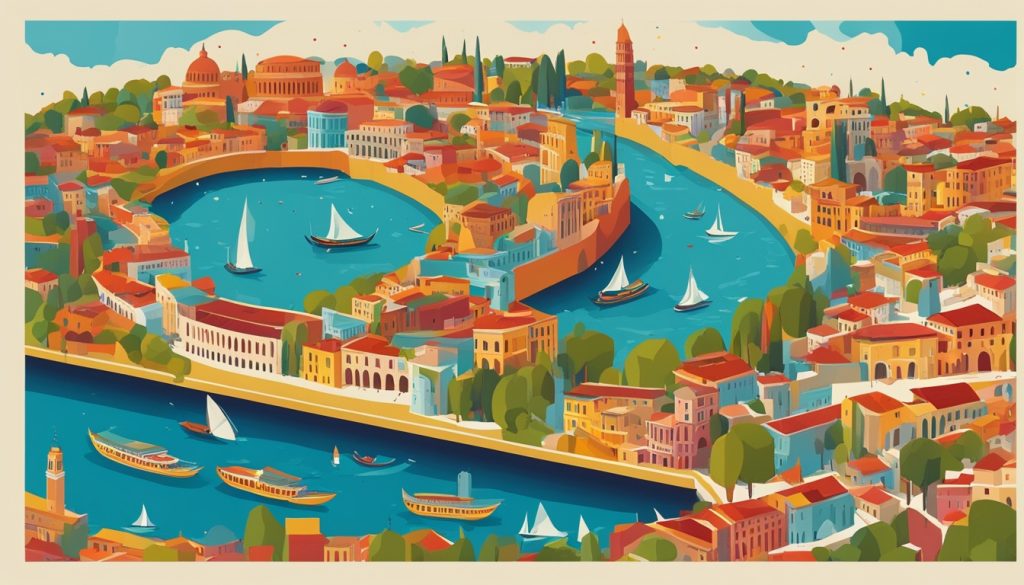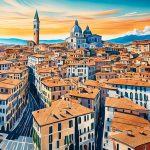Italy has a rich and colorful economic scene. It mixes history, modernity, and cultural zest. For businesses and investors wanting to thrive in Italy, knowing how the market works is key. They must also understand Italy’s unique culture.
This piece looks closely at Italy’s commercial trends. It offers insights into the Italian economy and its cultural quirks. To succeed, it’s essential to grasp Italy’s economic condition and cultural identity.
Key Takeaways
- Comprehending the nuances of Italy’s business statistics and cultural dynamics is vital for market entry.
- An in-depth Italian market analysis offers valuable commercial insights.
- Recognising the importance of Italy’s cultural idiosyncrasies can facilitate successful business operations.
- Understanding key commercial trends in Italy aids in strategic planning.
- Italy’s economic health significantly impacts business outcomes and investment decisions.
Overview of Italy’s Economy

Italy has a thriving and complex economic scene. Its nominal GDP hit USD 2,047 billion in 2022. This places the per capita GDP at USD 34,676, above the global average. Such figures show Italy’s strong economic position worldwide.
Nominal GDP and GDP Per Capita
Italy’s nominal GDP highlights its economic clout. With a GDP per capita of USD 34,676, Italy surpasses the world’s average of USD 10,589. This indicates a good distribution of wealth and economic health per person.
Economic Structure and Contribution by Sector
The services sector leads, making up 75% of the GDP. Manufacturing is next at 15%, while other industries contribute 8%. Agriculture adds 2%, showing Italy’s economy relies heavily on services for growth and stability.
Regional Economic Disparities
Italy sees varied economic success across its regions. The northern areas, with strong industry and job growth, are more dynamic. The south, however, struggles to match this growth. This difference stresses the need for policies to even out economic development across Italy.
Key Industries in Italy

Italy is home to world-famous brands and industries, which help its economy and international standing. It leads in automotive advances and fashion, showcasing a varied industrial scene.
Automotive Sector
The automotive sector is vital to Italy’s economy, with giants like Fiat, Ferrari, and Lamborghini. These brands are known for innovation and luxury. Italy plays a major role in the global car market, thanks to its facilities and design centers.
Pharmaceuticals
The pharmaceutical industry is key to health care and Italy’s industry. Firms like Chiesi and Menarini highlight strong manufacturing and research. Italy continues to lead in pharmaceuticals, thanks to ongoing investment in research and development.
Fashion and Luxury Goods
Italian fashion and luxury are symbols of elegance and quality. Names such as Armani, Prada, and Luxottica are known for setting worldwide trends. This sector not only leads in fashion but also boosts Italy’s economy, positioning Italy as a leader in fashion globally.
In conclusion, Italy’s automotive and pharmaceutical industries, along with fashion and luxury brands, create a dynamic industrial scene. They confirm Italy’s key position in the world’s industrial markets.
International Trade and Key Export Partners
Italy’s big role in international trade is vital for its economy. It trades with many partners, which shows how engaged it is in world markets.
Major Export Goods
Italy is famous for top-notch manufactured goods. These goods are a big part of its exports. Machinery and equipment are at the forefront, thanks to Italy’s advanced engineering. Besides that, Italy exports mineral fuels (3%) and food products (10%). Ores and metals (3%), and agricultural raw materials (1%) also play a part. This variety makes Italy’s exports diverse.
Trade Balance and Trade Partners
In 2022, Italy exported goods worth USD 623 billion but imported goods worth USD 641 billion. This resulted in a slight trade deficit. The country actively trades with key nations like Germany, France, and the USA. These strong ties highlight Italy’s cooperative approach to global commerce.
Import Dynamics
Italy’s imports are carefully chosen to support its industries and needs. It imports a mix of raw materials and intermediate goods for manufacturing. This strategy keeps Italy competitive and able to produce various goods. It also means Italy works closely with many countries for supplies.
Role of Tourism in Italy’s Economy
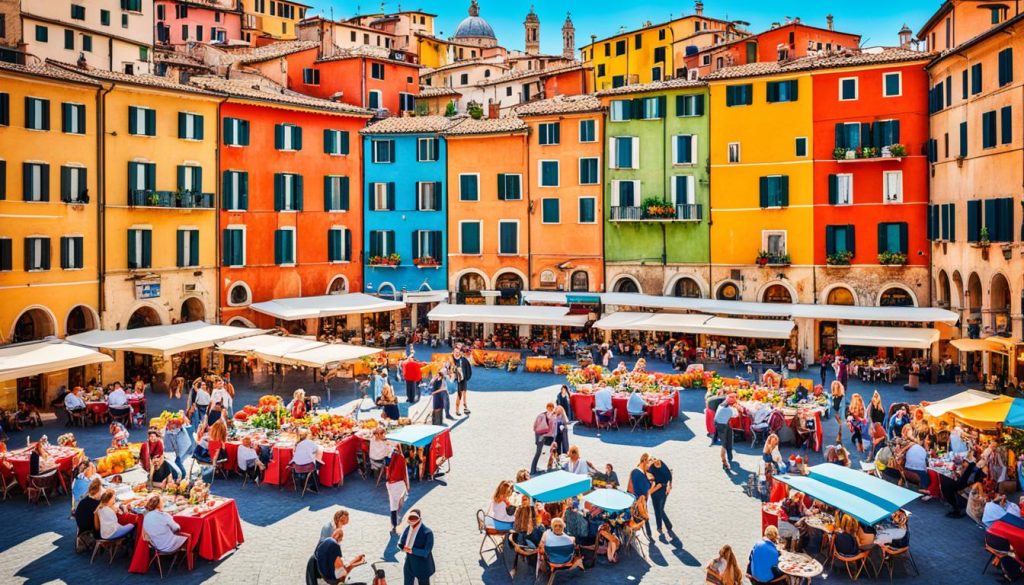
The Italian tourism sector is crucial for the country’s money matters. It’s famed for its deep cultural heritage and beautiful sights. Every year, loads of visitors come to see Italy. Places like Rome, Florence, and Venice boast old monuments, museums, and art galleries. These spots show off Italy’s long history and art success.
Tourism makes a big difference in Italy’s economy. Tourists bring money to hotels, transport, and shops. This sector also creates jobs. It helps communities grow and boosts the economy.
Tourism helps keep Italy’s cultural treasures safe and known. Famous spots like the Colosseum, the Vatican, and the Leaning Tower of Pisa attract people worldwide. Keeping these places in good shape is key. It keeps tourists coming and makes sure Italy’s story is valued globally.
So, tourism is very important to Italy’s wealth. By mixing its rich past with visitor-friendly services, Italy stays a top place to visit. This brings constant money from tourism to Italy.
Challenges Facing the Italian Economy
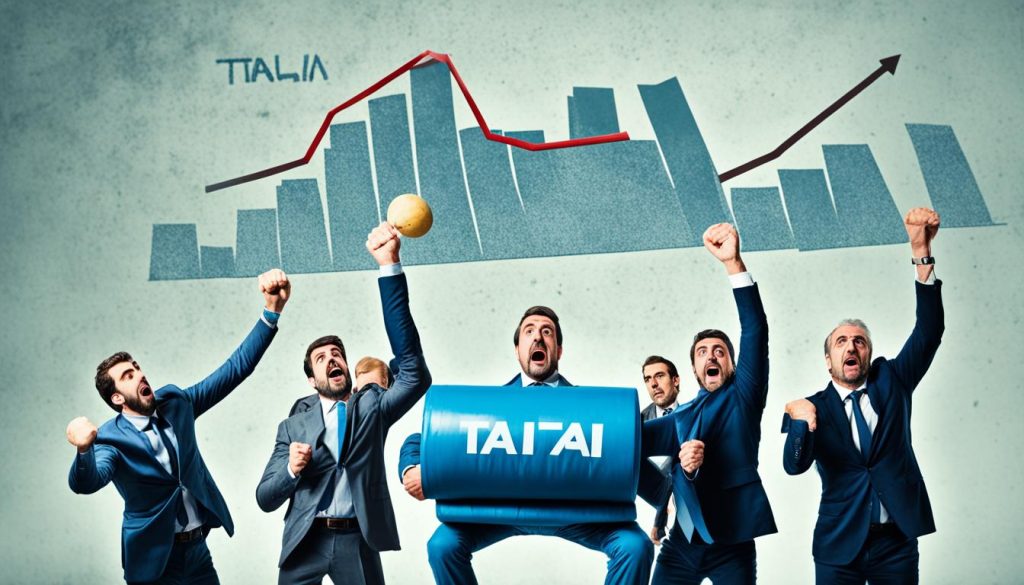
Italy faces big hurdles like high debt, stiff job laws, and too much bureaucracy. These issues slow down its growth and make things inefficient.
High Public Debt
Italy’s debt is more than 130% of its GDP. This huge debt stops the government from starting new projects or dealing with economic dips well.
Labour Market Rigidity
Italy’s job market has strict laws and a lot of unemployed young people. This makes it hard for businesses to adjust quickly and affects the economy.
Bureaucratic Inefficiencies
Businesses often face slow and complicated government processes. A tricky tax system and too much paperwork mean more delays and costs. This hurts economic growth and scares away investors.
It’s important to tackle these issues for a better and lasting economic future in Italy.
Business Culture in Italy

Getting to know how business works in Italy could be the key to success there. This culture stands out because of its special ways of communicating, strict office manners, and particular methods of making decisions.
Communication Styles
In Italy, building strong personal connections is very important in business talks. Italians love to meet in person. They use gestures and facial expressions a lot. Building trust and getting along well matters because business chats can turn into personal conversations.
Workplace Etiquette
The office life in Italy is formal and shows a deep respect for the chain of command. People often use titles and last names. This shows Italy’s traditional values and respect for those in charge. Being on time matters, but they are also okay with changing meeting times. Dressing smartly and looking good is essential.
Decision-Making Processes
Making decisions in Italian companies usually happens from the top down. It means the bosses have a lot of power. Even though everyone’s opinion is important, the top people make the final call. Knowing this can help a lot when you’re trying to work well with Italian companies.
Fiscal Policies and Economic Forecast
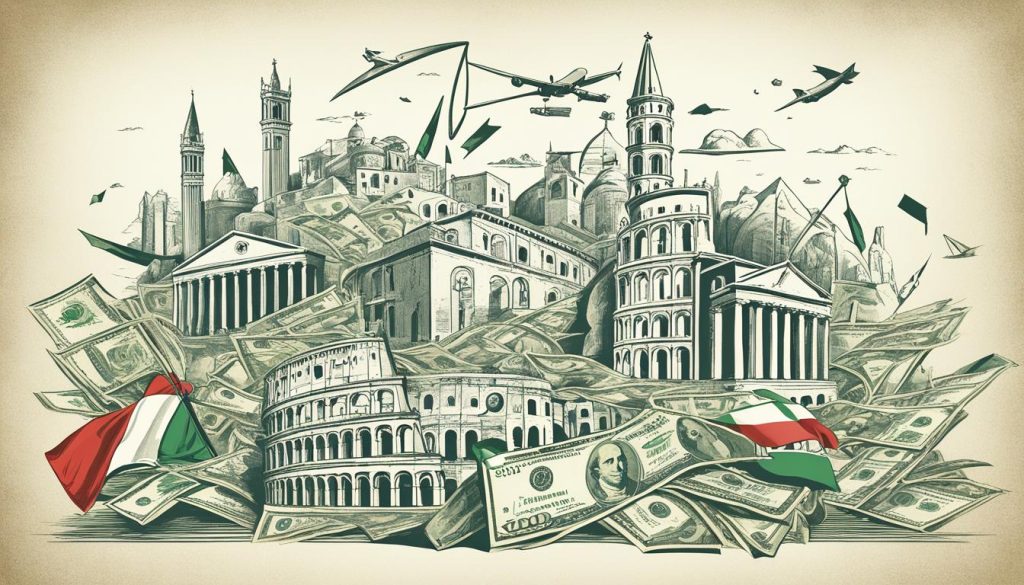
Italy’s economy depends heavily on its fiscal policies and economic outlook. Dealing with public finance pressures requires smart strategies. This understanding is key for its future.
Historical Fiscal Deficit
Italy has seen a fiscal deficit of 4.2% of GDP over the past decade, up to 2022. This consistent deficit highlights the struggle to balance the national budget. It also shows the effort to keep the economy stable. Tackling this issue is crucial for Italy’s economic policy.
Economic Growth Projections
Forecasts for Italy’s economy show a possibility of growth, yet the picture remains complex. Factors both within Italy and worldwide affect these forecasts. Understanding these can help make better economic policies.
EU Funding and Reforms
Italy looks to boost its economy through EU funding and reforms. These are aimed at driving growth and improving fiscal practices. These EU reforms are essential for Italy’s long-term economic health and growth.
Italy’s Banking and Financial Sector

The Italian banking and financial sector is highly regarded. Milan is known as the main financial hub of the country. Efforts have been made to improve the sector’s infrastructure, benefiting businesses and investors.
Role of Milan in Conference
Milan is at the heart of the Italian banking sector. It houses many financial institutions and big businesses. The Borsa Italiana, Italy’s stock exchange, is also there, making Milan essential for finance. The city attracts global investors seeking opportunities in Italy.
Banking Services and Infrastructure
Italy, especially Milan, has strong banking services and infrastructure. Companies like UniCredit and Intesa Sanpaolo offer a wide range of financial services. These include retail banking and complex corporate finance. There has also been a rise in modern digital banking services.
Investment Climate
The investment climate in Italy is varied and changing. Political stability, economic policies, and rules affect investment confidence. Milan’s dynamic financial scene attracts those looking at investment opportunities in Italy. Investors have to consider Italy’s economic and regulatory factors carefully.
Inflation and Monetary Policy in Italy
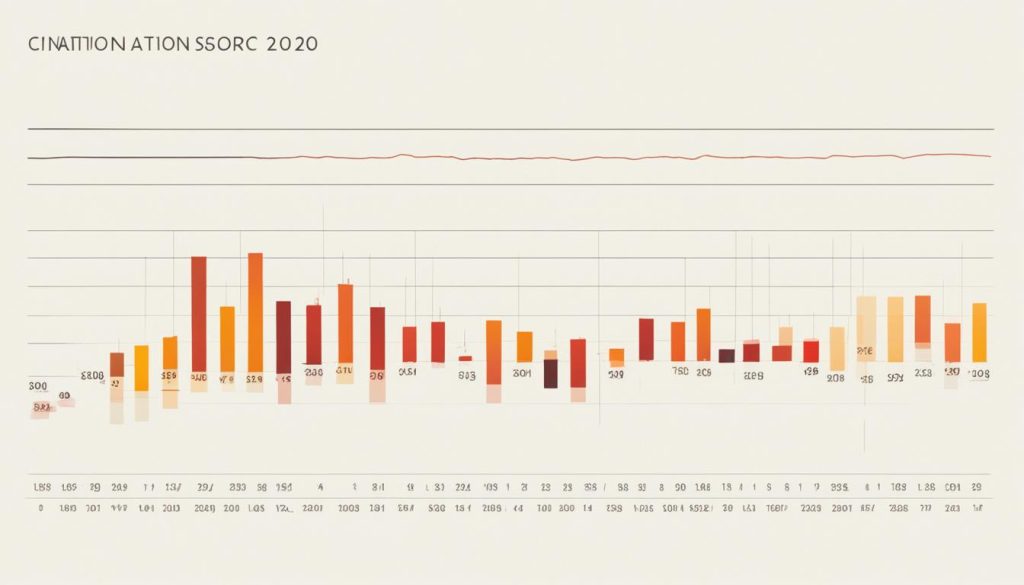
In the last ten years, Italy’s inflation rate has mostly stayed at 1.7%. This steady number tells us a lot about the cost of living and financial security in Italy.
Inflation Trends
Inflation in Italy has gone up and down a bit due to various reasons. It’s important to keep an eye on these changes. They have a big impact on how much people can buy and the state of the economy.
In recent times, we’ve seen some ups and downs in prices. The European Central Bank plays a key role in managing these shifts.
Monetary Policy Adjustments
Italy’s approach to money management has changed to stay in step with the Eurozone. The European Central Bank has been key in this. In 2022, the policy rate rose to 2.50% from 0.75% ten years ago.
It’s quite important to get the hang of Italy’s money rules. Both national and European groups work together. They ensure the economy stays steady, showing why these changes are critical.
Italy’s Cultural Enterprises and Economic Impact
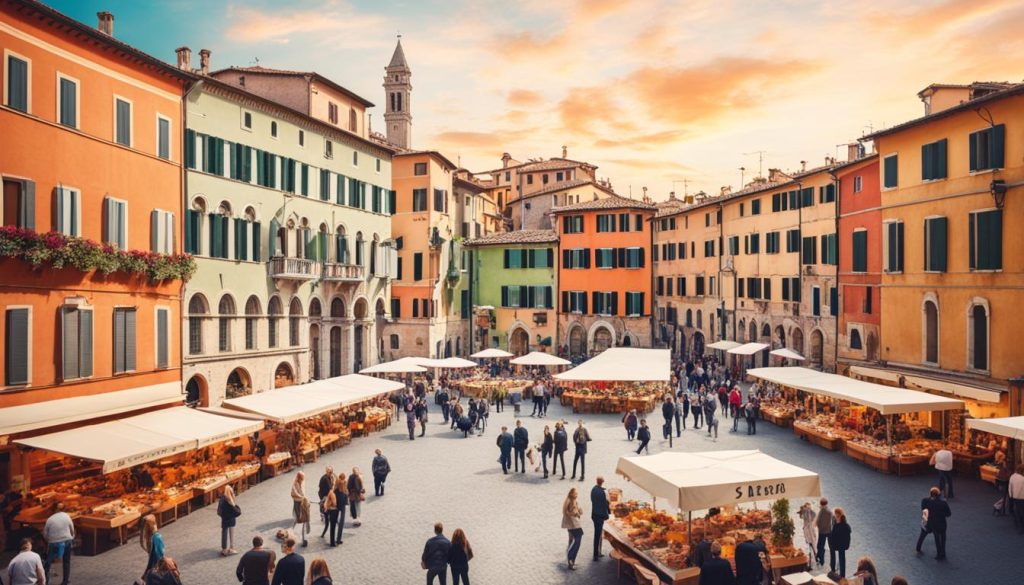
Italy’s cultural sector deeply impacts its economy. This area includes arts, heritage, and creative industries. These contribute significantly to Italy’s economic growth and GDP.
Value Added by Cultural Sector
The cultural sector is vital to Italy’s economy. It contributes 1.9% of the value added by non-financial businesses. This includes media, performing arts, and preserving heritage. These activities strengthen Italy’s economy.
Turnover and Economic Contributions
Cultural enterprises account for 1.5% of Italy’s net turnover. They create jobs and enhance life quality. They make Italy more culturally significant. Their impact reflects on Italy’s GDP and regional growth.
Regional Distribution of Cultural Enterprises
Cultural enterprises are spread across Italy. Northern Italy has many due to its vibrant economy. But central and southern regions are also rich in culture. Italy plays a major role in the EU’s cultural sector, showing the power of local culture.
Business Statistics and Culture in Italy
Italy’s engaging cultural firms are key to the EU’s wider cultural scene. By looking into Italy’s business performance, we see its unique spot among EU nations.
Comparative Analysis with Other EU Countries
When comparing cultural businesses across the EU, Italy’s stand out for their immense impact. These enterprises are vital to Italy’s economy, famed for their rich traditions and fresh ideas.
Cultural Business Trends
Italian cultural trends show a vibrant scene that respects its past while adapting to new changes. Italy’s cultural sector is a beautiful mix of old and new, making it a leader in the field.
Emerging Sectors and Growth Opportunities
Italy is finding new ways to grow. It focuses on new sectors. This includes advances in sustainability and technology. These steps are key for Italy’s economic future.
Technology and Innovation
Technology and innovation are booming in Italy. Companies lead in artificial intelligence, robotics, and digital upgrades. Italy is becoming key in global tech by enhancing these sectors.
Investing in research and development is crucial. It keeps the country’s tech momentum strong.
Green Economy and Sustainability
Italy is moving towards a green economy. Efforts to reduce carbon emissions and boost renewable energy are underway. This aligns with the EU’s sustainability targets.
Adopting circular economy strategies supports this goal. It helps build a greener, stronger economy.
Start-up Ecosystem
Italy’s start-up scene is thriving. Innovative entrepreneurs drive this growth. The environment supports fintech, agritech, and healthcare start-ups.
Accelerators and incubators help new businesses grow. Domestic and international investments also play a part. They make the ecosystem dynamic.
Labour Market Dynamics in Italy
The Italian job market has changed a lot due to different socio-economic factors. We’ll look at how unemployment and job trends in various sectors show Italy’s economic state.
Unemployment Rates and Trends
In the last ten years, Italy’s jobless rate was around 10.8% on average. This highlights challenges in finding jobs, especially in southern areas. Efforts from the government and changes in job policies are trying to make things better all over the country.
Employment by Sector
Looking at jobs by sector shows Italy’s job scene is varied. Service jobs make up nearly 70% of all jobs. Manufacturing provides jobs for about 20% of workers, while agriculture and other fields have the rest. These trends show how job opportunities are changing in Italy.
Wage Growth and Real Income
It’s key to look at Italy’s real income to see how much people can buy with their wages. Even though wages have gone up a little, when you consider inflation, incomes haven’t kept up. This raises concerns about how well people can live. Policies to help wages grow and keep inflation low are important for improving living conditions.
Small and Medium-Sized Enterprises (SMEs) in Italy
In Italy, Small and Medium-Sized Enterprises (SMEs) are very important. They make up over 90 percent of businesses there. These SMEs add a lot to the Italian GDP. They also create many jobs and keep the economy lively. Knowing what SMEs do helps us understand Italy’s economy better.
Contribution to GDP
SMEs in Italy create nearly 68 percent of the total GDP. Their big impact shows in many areas like manufacturing and services. They help keep the economy stable and growing. Indeed, SMEs are crucial for Italy’s economic success.
Challenges and Opportunities
Italian SMEs face some big challenges, though. It’s hard for them to enter new markets and get enough money to grow. They need support from the government and financial institutions to overcome these hurdles. But there’s also a lot of opportunities for them.
New areas like tech and the green economy are exciting for SMEs. These sectors show a lot of promise for growth. It looks like the future could be bright for SMEs in Italy.

